A Price Comparison: Vinyl Siding vs Hardie Board
When it comes time to replace your home’s siding you can be forgiven for feeling overwhelmed by the choices available. You’ll need to decide on the perfect color of paint, whether or not to go with lap siding versus cedar shake, the countless style choices you can make regarding trim, shutters, soffits, and more.
On top of all of these style choices, there is one choice that is a bit more substantive: what siding material should you go with? Today we’ll help with that decision by comparing the long-term cost of ownership of two popular options for siding replacements: polyvinyl chloride, more commonly known as PVC or vinyl siding, and James Hardie fiber cement siding.
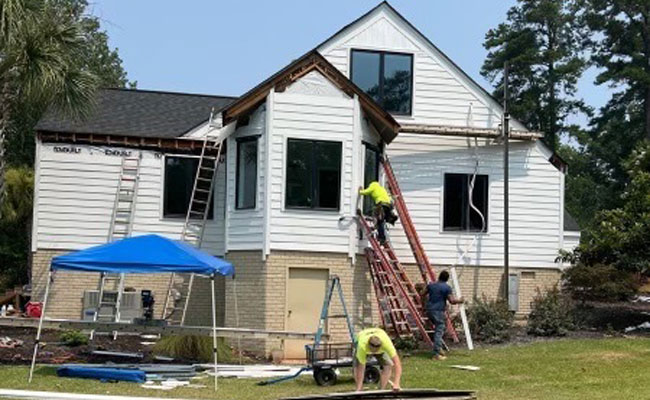
Comparing vinyl and fiber cement board
Both vinyl siding and fiber cement products, like James Hardie Siding, come in a wide range of styles and color options. Whether you want a farmhouse aesthetic, a contemporary look, or even realistic wood grain, you’ll have options in both vinyl and fiber cement. The biggest difference between the two types of siding comes not from how they look, but from how they are built.
Note: Many people prefer the curb appeal of James Hardie versus vinyl siding, as it more closely resembles real wood.
Vinyl siding is a thin sheet of molded plastic. While the plastic is molded to give the appearance of boards up to ¾ inch thick, the plastic skin is actually quite thin. The thinnest products on the market may only be 0.038 inches thick, while premium vinyl siding is typically greater than 0.05 inches thick. For comparison that is about as thick as a stack of 12 sheets of copy paper.
James Hardie cement board products, on the other hand, are a composite material made from Portland cement, sand, and wood pulp or cellulose fibers. Unlike vinyl, cement board siding is as thick as it looks. If you choose a ½ inch thick lap board style, your Hardie Boards will be ½ inch in thickness.
While either type of siding can provide similar visual impact, the products perform very differently. Vinyl siding is a thin veneer of plastic while James Hardie products are full-thickness fiber cement boards. If you guessed that this might have some impact on durability, you’re not wrong.
Vinyl siding is notorious for melting, warping, and cracking. In regards to melting, heat sources like grills need to be kept at a distance from vinyl siding – but you’ll also need to be aware of heat reflecting from your neighbor’s low-E windows! Care will need to be taken to avoid sharp impacts, as vinyl’s thin profile is easily cracked, even when new.
Fiber cement on the other hand, provides durability that far exceeds vinyl, and even bests traditional wood siding. James Hardie products are immune to termite infestation, mold resistant, fire retardant, and are extremely robust.
Note: Due to HardiePlank being noncombustible (it will not ignite when exposed to direct flame), many home insurance policies offer discounts for homes which use fiber cement siding products. Ask your insurance agent to see how your siding options impact your plan.
But what about the price!?
Ok, we hear what you’re saying: who cares how durable HardiePlank siding is – doesn’t it cost a fortune? Well, this is a common misconception that we’re here to set straight! Instead of speaking in generalities, we’re going to compare real quotes for a siding job that we recently completed!
The house we quoted for is about as close to the average South Carolinian home we could find. This 2-story, 3 bedroom, 2 bath, ~1700 square foot home had existing vinyl siding which had reached the end of its life and needed to be replaced.
The owner wanted a quote for both high-quality vinyl siding and for James ColorPlus lap siding and here are the actual quotes we provided them:
Cost of Vinyl Siding & Installation: $22,388
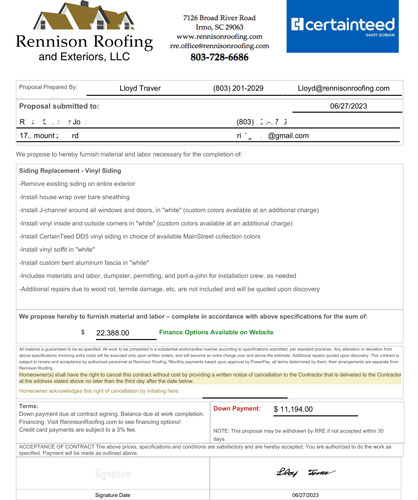
Cost of Hardie Board & Installation: $28,312
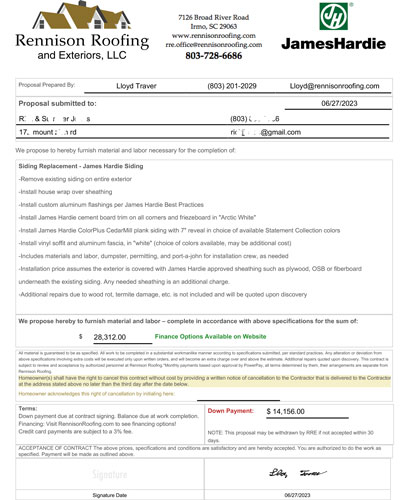
Installation price isn’t the whole story
While at first glance it seems that vinyl is indeed the cheaper option, the installation costs hides a very important part of the story: longevity.
How vinyl ages
If you talk to the manufacturer, vinyl, under perfect conditions, should last forever. However, perfect conditions don’t exist in real life, and expecting your vinyl siding to last forever is unrealistic. The sun, harsh weather conditions, and airborne pollutants all conspire to cause oxidation, leading to accelerated wear. Just like us, vinyl doesn’t age all at once. For the first 10 years or so you can expect your siding to be bright and relatively resilient. Bear in mind that vinyl is never as durable as Hardie Plank – even from day one – but it will generally shrug off light impacts.
However, as its age approaches the teens you should expect to see some changes. Colors will begin to fade – with dark colors suffering most. The surface may develop a chalky patina or begin to warp. Mold and mildew which was once easily kept at bay will become a more stubborn foe.
Note: Vinyl is generally not designed to be repainted. If repainting is desired, only choose professional painters who have experience repainting vinyl.
Worst of all – the once-adequate durability will be replaced with a brittleness that is familiar to anyone who has tried to sit on a sun-bleached plastic chair. Lean a ladder against your home’s exterior? You’ll probably hear a crack. Mowing the lawn and accidentally send a rock into your siding? Crack. Playing frisbee with your kids and miss a catch? Crack. If siding panels are damaged, they can be replaced piecemeal. However, each replacement will run you between $450 and $650 a piece. And, while the panels themselves can be replaced – the repairs will be easily spotted, with the older, faded siding contrasting against the bright, fresh vinyl.
Eventually your vinyl will reach the point where repairs are no longer possible. The original panels will become brittle to the point that any attempt to replace an adjacent panel will cause them to crack. At this point the siding has reached the end of its life and will need to be replaced.
Vinyl Life Cycle
Years 1-10: Bright colors, decent durability.
Years 10-15: Colors begin to fade, durability wanes.
Years 15+: Chalky finish, faded colors, and widespread brittleness.
Years 20+: Consider replacement.
How Hardie Board ages
To put it simply: James Hardie siding ages incredibly gracefully. No warping, no cracking, and with JH’s ColorPlus you get built-in mold resistance and 15 years of guaranteed color fastness. We’ve found that ColorPlus products offer 20 to 25 years of great color before they need to be repainted. After that, you’ll probably need to repaint every 15 years or so.
James Hardie siding is engineered to last 50+ years, and unlike vinyl siding this doesn’t require perfect conditions. Homeowners can realistically expect five decades of reliable service from James Hardie fiber cement siding, with very little need for maintenance or repairs.
James Hardie ColorPlus Life Cycle
Years 1-20: Bright colors and incredibly durable. Termite, fire and mold resistant.
Years 20-25: Colors may begin to fade, consider repainting. Still durable. Termite, fire and mold resistant.
Years 25-50: Repaint every 15 years for best appearance. Still durable. Termite, fire, and mold resistant.
Years 50+: Approaching end of engineered life. Still termite, fire and mold resistant. Begin considering replacement.
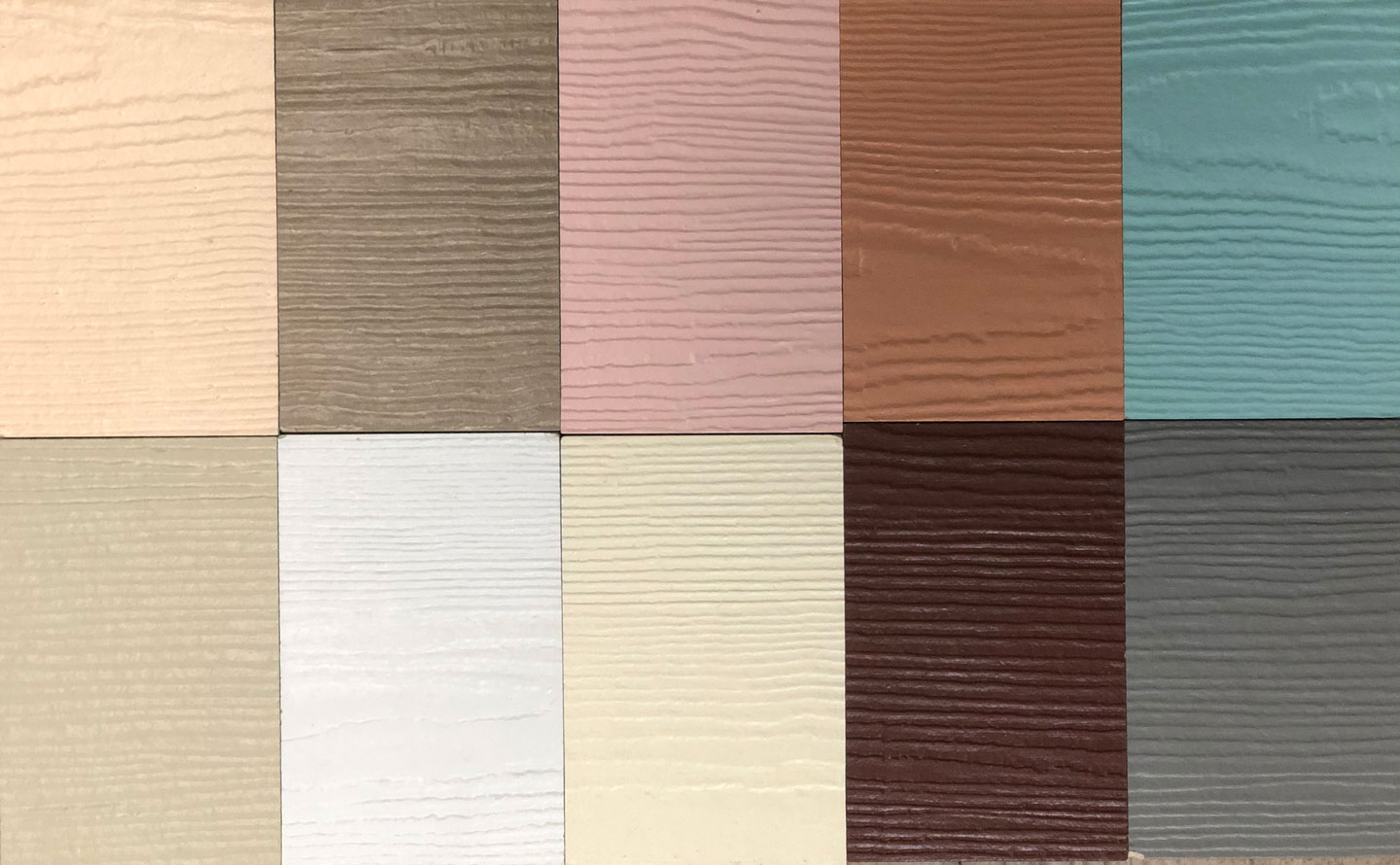
But what about warranties?
Warranties are a funny thing. The CertainTeed vinyl that we quoted for our siding installation is one of the best brands on the market and comes with a lifetime warranty. However, when you read the fine print, you’ll soon see the warranty doesn’t cover “normal weathering, fading, chalking or oxidation; discoloration or other damage caused by air pollution…, mold, mildew, damage resulting from accidents, fire, vandalism, wind-blown or foreign objects.”
Basically, the warranty protects homeowners against product defects – but vinyl’s natural fragility isn’t a defect, it’s just how the product is!
The manufacturer’s warranty does provide protection against hail damage – but even here the fine print is worth considering. Homeowners will still be left paying for their insurance deductible, as well as the cost of labor for removal of damaged panels and the labor cost for installation of new panels.
James Hardie provides a 30-year warranty against hail and termite damage – although in practice Hardie Board siding resists both of these for far longer. Additionally, the ColorPlus guarantee means that your siding is warrantied against peeling, cracking, and chipping for 15 years.
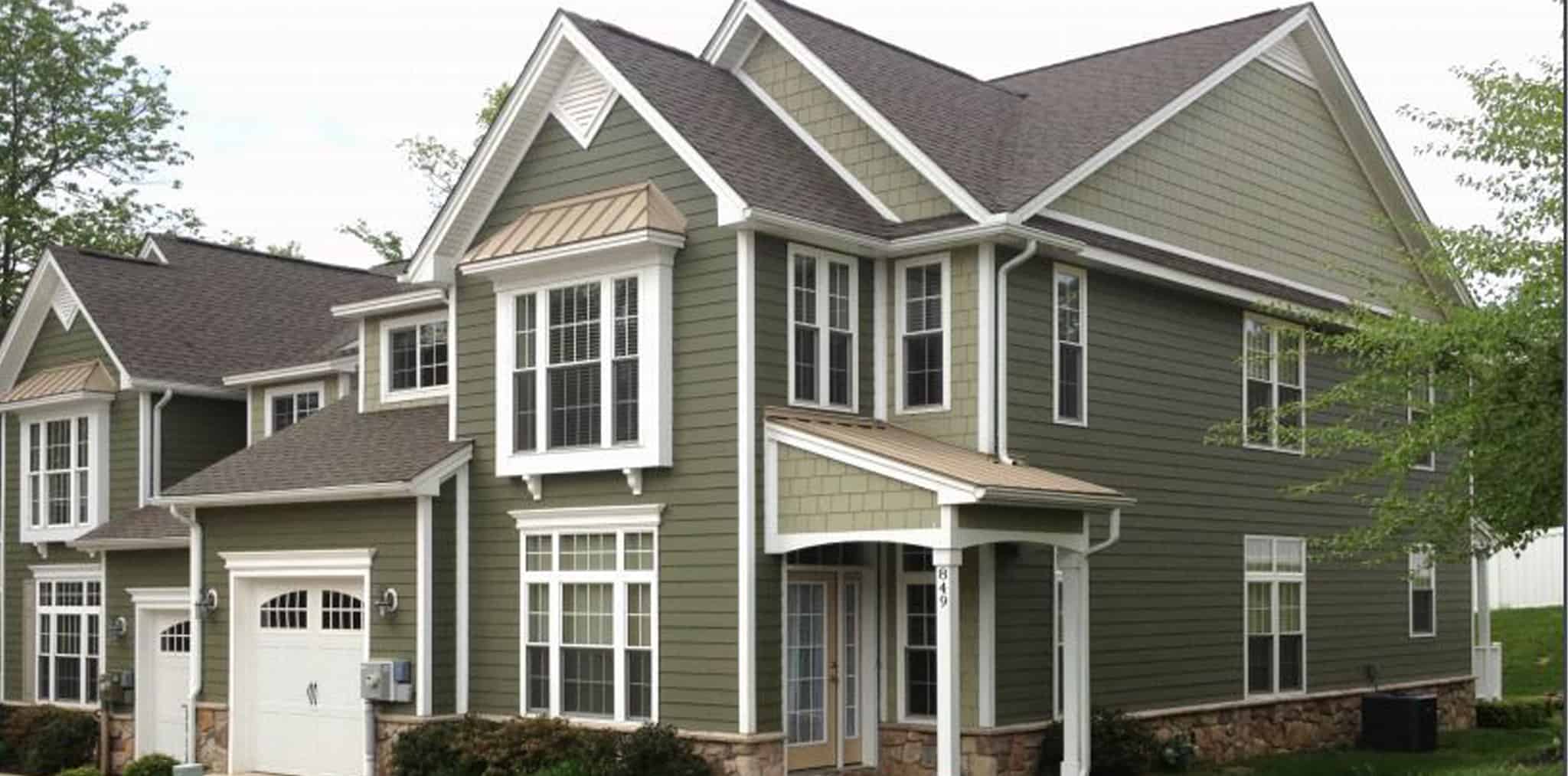
James Hardie: A clear winner
While the upfront costs of Hardie Board are slightly higher, homeowners can expect more than double the life from James Hardie fiber cement siding versus vinyl. Not only will James Hardie products last longer, but they offer a low-maintenance and more relaxed ownership experience.
For anyone who is planning on staying in their home for a long time, the benefits of choosing Hardie Plank are obvious. Even if you’re planning on moving, the longer life offered by Hardie Board helps with resale value. With an upfront cost just 25% higher than vinyl, but a lifespan that is more than double, James Hardie products are a sound investment for the future.
